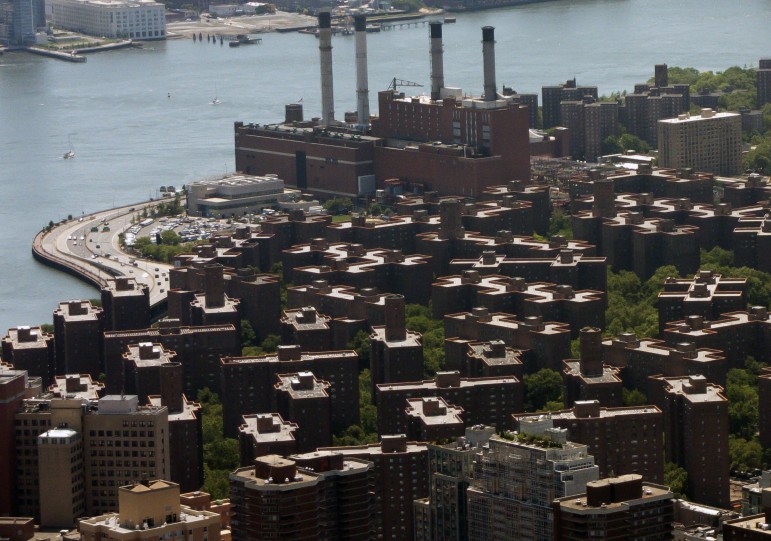
Wendell Fisher
Peter Cooper Village and Stuyvesant Town
Mayor de Blasio notched an affordable housing victory on Monday with the announcement that investors who will buy the massive Stuyvesant Town-Peter Cooper Village development agreed to reserve 5,000 units for “affordable housing.” Icing on the cake was the fact that the city subsidies involved, some $77 million in waived transaction taxes and a $144 million low-interest loan, are cheaper than what the city earlier offered to support a middle-class safe harbor there.
The fact that the city was able to shape a private real-estate transaction—let alone do so in a way that affected nearly half the apartments in the complex—is indeed a feather in the mayor’s cap. But the details of the win indicate how difficult it is to squeeze real affordability out of the hottest parts of the housing marketplace.
According to The Times, the affordability requirement only extends for 20 years. Affordable housing advocates are increasingly concerned about term-limited affordability, since a major factor in today’s housing crunch is the expiration of affordability requirements on tens of thousands of units financed in the 1980s and 1990s.
What’s more, the Times says:
Under the new agreement with the de Blasio administration, 4,500 apartments would be reserved for middle-income families. A family of three earning up to $128,210 a year, for example, would pay a rent of $3,205 a month for a two-bedroom apartment. An additional 500 apartments would be set aside for families making less. For example, a family of three earning up to $62,150 a year would pay about $1,553 in rent for a two-bedroom.
The 500 lower-income apartments target what’s equivalent to 80 percent of area median income—a typical sweet spot for affordable-housing deals. The other 4,500 units target 165 percent AMI, the very top of the income ladder that the de Blasio housing plan aims to serve.
The question of whether public resources should be used to create or preserve housing for families making as much as $128,000 is not new—it was a point of tension for Mayor Bloomberg’s housing plan, and it’s been an argument around the current mayor’s vision as well.
Proponents of this approach argue the city has a duty to support income diversity; there’s also an argument that including middle-class families in the housing plan (de Blasio’s blueprint calls for 11 percent of the promised 200,000 units to be directed to households earning more than $100,680) bolsters its political viability, to the benefit of all income levels that are served.
Opponents say that since the housing crisis is concentrated in lower-income New York, that’s where public resources should be devoted. A key housing report this summer showed that the vacancy rate for apartments renting at above $2,500 a month was 7.32 percent in 2014, up from 5.02 percent in 2011, while apartments renting for $800 or less—affordable for households with incomes of $32,000 or lower—had a vacancy rate of just 1.80 percent in ’14.
Of course, a modest foothold for the middle-class is better than a 100 percent market-rate Stuy Town. While the rents on the 4,500 middle-income units aren’t low, the market-rate ones are even higher.
But affordable housing deals that render rents close to what the citywide market is generating open the mayor up to criticism from people who oppose city-sponsored housing in the first place. Just this morning, the Manhattan Institute released a report that concludes: “Mayor de Blasio’s affordable housing goals are predicated on the false assumption of an existing, inevitable shortage of housing within the means of low- and middle-income households.” The report appears to ignore the role that existing—perhaps expiring—subsidies like 421-a and rent regulations play in maintaining that market-generated affordable supply, and it glosses over the disparity between Area Median Income and what neighborhood residents actually make. Its main finding, however, is that the private market is offering plenty of the same kind of affordable apartments de Blasio hopes to preserve and build at public expense, and the Stuy-Town deal might not be the best rebuttal to that.
UPDATE: City Hall just released details of the deal. Another 1,400 apartments that were going to lose all rent protections in 2020 will get another five years of such protection with rent hikes capped at 5 percent per year. And the administration notes that some market rents in the complex were as high as $10,000 a month. By that measure, $3,200 is a bargain.
City Limits’ coverage of housing policy is supported by the Charles H. Revson Foundation.
* * * *









One thought on “Stuy-Town Deal’s Affordable Housing is Barely So”
This is an outrage. This property was built as affordable housing to accommodate those who work for a living everyday and keep this city going. The rents are prohibitive and the new landlord Blackstone and their various partners care nothing about the tenants. This is not a luxury property. it is a standard property there is no doorman or other services that “luxury” properties offer. This is a buzzer system building which the landlord applied for MCI increase of about $50 per month in addition to all the tax benefits and the land from taxpayers through the City that this property owner benefits from. This is disgraceful. We need to speak out. This is no more than welfare to large corporations on the backs of the working class who work day and night to provide for their families and their children future. This is shameful but these people who run these corporations have no shame.